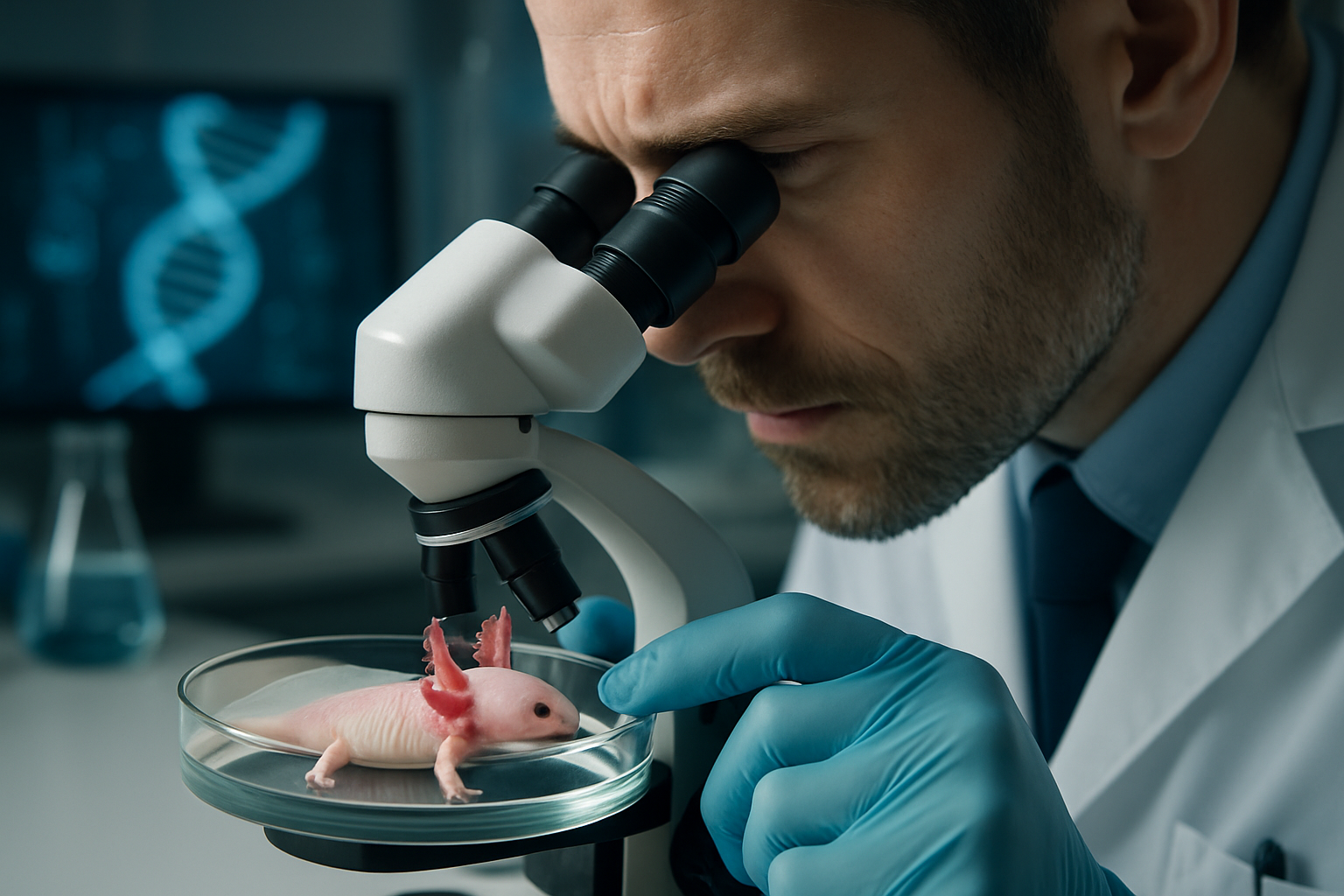Unlocking the Secrets of Axolotl Regeneration: A Medical Marvel
In the realm of regenerative medicine, one peculiar amphibian stands out as a beacon of hope and scientific fascination. The axolotl, a salamander native to Mexico, possesses an extraordinary ability to regrow lost limbs, organs, and even parts of its brain. This remarkable creature has captured the attention of researchers worldwide, offering tantalizing clues for potential breakthroughs in human tissue regeneration and wound healing.

A Glimpse into Axolotl Biology
Axolotls, scientifically known as Ambystoma mexicanum, are neotenic salamanders that retain their larval features throughout their lives. Unlike most amphibians, they never undergo metamorphosis, remaining aquatic and gilled. This arrested development is key to their regenerative abilities, as they maintain a high number of stem cells in their tissues.
These fascinating creatures can reach up to 12 inches in length and live for up to 15 years in captivity. Their natural habitat is restricted to the canals and wetlands of Xochimilco, near Mexico City. However, due to urbanization and pollution, wild axolotls are critically endangered, with estimates suggesting fewer than 1,000 individuals remain in their natural environment.
The Miracle of Regeneration
Axolotls possess an unparalleled ability to regenerate lost body parts. When injured, they can regrow entire limbs, tails, organs, and even portions of their brain and heart. This process occurs without scarring and results in fully functional, genetically identical replacements. The speed and efficiency of this regeneration are nothing short of miraculous, with complex structures like limbs regrowing in a matter of weeks.
The secret to this regenerative prowess lies in the axolotl’s unique cellular properties. When injury occurs, nearby cells dedifferentiate – essentially turning back their biological clocks to become stem-like cells. These cells then proliferate and redifferentiate into the various cell types needed to rebuild the lost tissue. This process is guided by a complex interplay of genes and signaling molecules that scientists are only beginning to unravel.
Cutting-Edge Research and Discoveries
Recent years have seen a surge in axolotl-focused research, with groundbreaking studies shedding light on the molecular mechanisms behind their regenerative abilities. In 2018, researchers successfully sequenced the axolotl genome, revealing it to be ten times larger than the human genome. This genetic treasure trove has provided invaluable insights into the genes and pathways involved in regeneration.
One key discovery is the role of fibroblasts in the regeneration process. These cells, which typically form scar tissue in mammals, behave differently in axolotls. Instead of creating scars, axolotl fibroblasts revert to a stem-like state and contribute to the formation of new, functional tissue. Understanding how to replicate this process in human cells could revolutionize wound healing and tissue repair.
Implications for Human Medicine
The potential applications of axolotl regeneration research in human medicine are vast and exciting. While we’re still far from regrowing human limbs, the insights gained from studying these amphibians could lead to significant advancements in treating injuries, degenerative diseases, and even age-related decline.
One promising area of research focuses on spinal cord injuries. Axolotls can regenerate their spinal cords with remarkable precision, restoring full functionality. By understanding the molecular pathways involved in this process, scientists hope to develop new therapies for spinal cord injuries in humans, potentially offering hope to millions of people living with paralysis.
Challenges and Ethical Considerations
Despite the immense potential, translating axolotl regeneration research to human applications faces several challenges. The vast differences between axolotl and human biology mean that direct application of their regenerative mechanisms is unlikely. Instead, researchers must carefully adapt and translate these insights to work within the constraints of human physiology.
There are also ethical considerations to navigate. As research intensifies, there’s a growing need to balance scientific progress with the conservation of wild axolotl populations. Efforts are underway to establish sustainable captive breeding programs and protect the axolotl’s natural habitat, ensuring that this remarkable species continues to thrive both in the wild and in laboratories.
The Future of Regenerative Medicine
As research progresses, the axolotl continues to surprise and inspire scientists. Recent studies have explored the potential of using axolotl-derived compounds in wound healing treatments, with early results showing promise in accelerating tissue repair. While such applications are still in their infancy, they hint at the transformative potential of axolotl-inspired therapies.
The journey from understanding axolotl regeneration to developing human medical applications is long and complex, but the potential rewards are immense. As we continue to unlock the secrets of these remarkable creatures, we edge closer to a future where severe injuries and degenerative conditions might be treated with regenerative therapies inspired by the humble axolotl.
In conclusion, the axolotl’s extraordinary regenerative abilities offer a window into the possibilities of tissue regeneration and repair. As research advances, these amphibian marvels may hold the key to groundbreaking medical treatments, potentially revolutionizing how we approach healing and tissue repair in humans. The axolotl’s journey from endangered species to medical marvel is a testament to the power of scientific curiosity and the endless wonders of the natural world.





